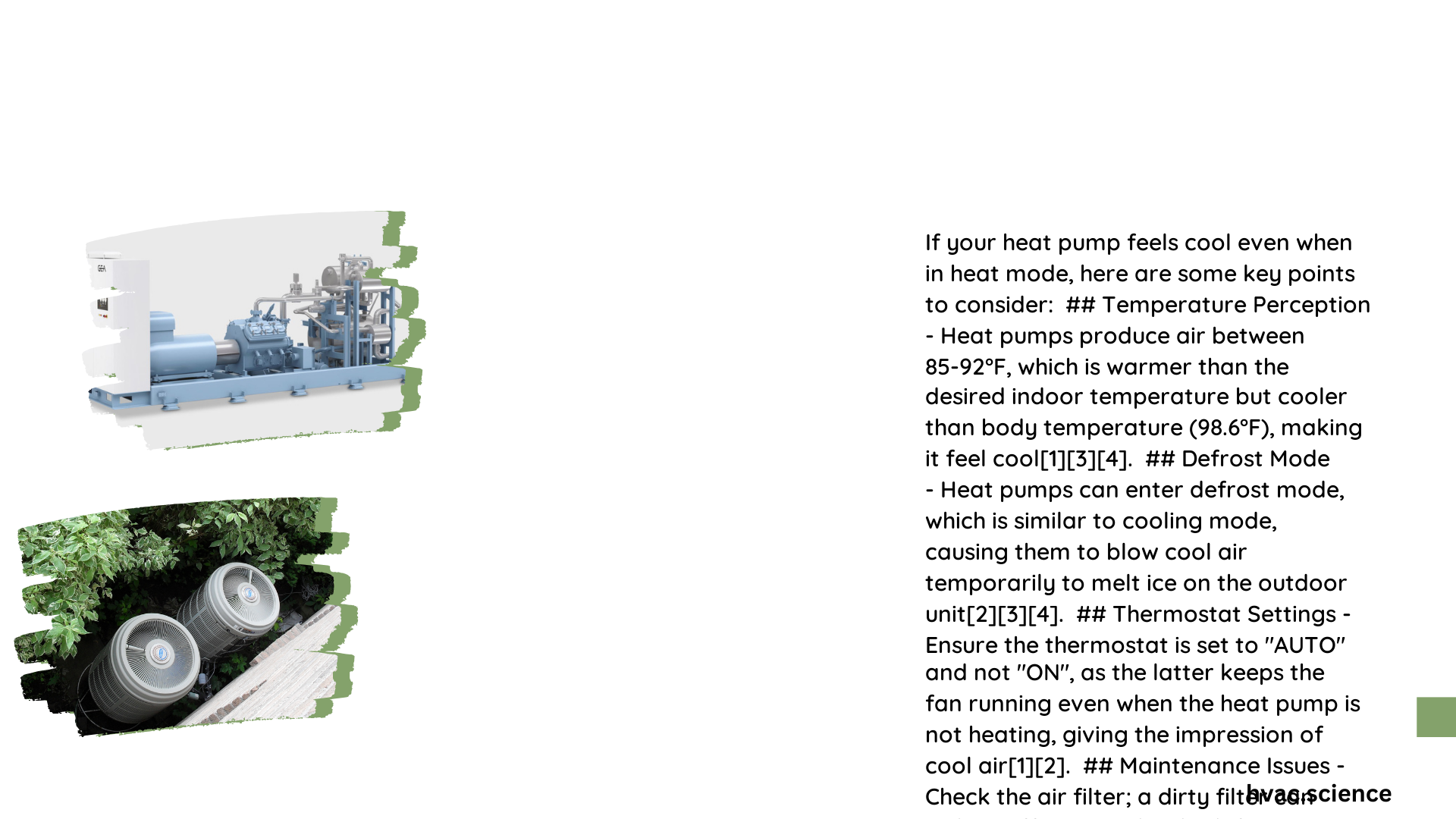A heat pump that feels cool when it should be heating can be frustrating and uncomfortable. This issue often stems from various factors, including thermostat problems, refrigerant leaks, or mechanical failures. Understanding the causes and solutions can help homeowners maintain optimal indoor comfort and energy efficiency. This article explores common reasons why a heat pump might feel cool and provides practical troubleshooting steps.
Why Does My Heat Pump Feel Cool When It Should Be Heating?
Heat pumps are designed to provide both heating and cooling by transferring heat from one location to another. When in heating mode, a properly functioning heat pump should blow warm air. However, several issues can cause a heat pump to feel cool:
- Defrost mode activation
- Incorrect thermostat settings
- Refrigerant leaks
- Reversing valve malfunction
- Dirty air filters or coils
Let’s explore each of these potential causes in detail.
What Is Defrost Mode and How Does It Affect Heat Pump Temperature?

Defrost mode is a normal function of heat pumps that prevents ice buildup on the outdoor unit during cold weather. When activated:
- The heat pump temporarily switches to cooling mode
- The outdoor fan stops running
- The system blows cool air for a short period (usually 5-15 minutes)
This process can make the heat pump feel cool momentarily but is essential for maintaining efficiency. If defrost mode occurs frequently or lasts too long, it may indicate a problem requiring professional attention.
How Can Incorrect Thermostat Settings Cause a Cool Heat Pump?
Thermostat settings play a crucial role in heat pump performance. Common thermostat-related issues include:
- Incorrect mode selection (e.g., set to ‘Cool’ instead of ‘Heat’)
- Fan set to ‘On’ instead of ‘Auto’
- Temperature set too low
- Faulty thermostat not communicating properly with the heat pump
To troubleshoot:
- Check the thermostat mode and ensure it’s set to ‘Heat’
- Set the fan to ‘Auto’ to prevent continuous air circulation
- Adjust the temperature setting higher
- Consider replacing an old or malfunctioning thermostat
What Role Do Refrigerant Leaks Play in Heat Pump Cooling Issues?
Refrigerant is crucial for heat transfer in a heat pump system. Low refrigerant levels due to leaks can cause:
- Reduced heating capacity
- Ice buildup on the outdoor unit
- Increased energy consumption
Signs of a refrigerant leak include:
- Hissing sounds near the heat pump
- Higher than usual energy bills
- Inconsistent heating performance
If you suspect a refrigerant leak, contact a certified HVAC technician for proper diagnosis and repair.
How Does a Malfunctioning Reversing Valve Affect Heat Pump Temperature?
The reversing valve is responsible for switching the heat pump between heating and cooling modes. A stuck or faulty reversing valve can cause the system to blow cool air when it should be heating. Symptoms include:
- Cool air from vents in heating mode
- Inability to switch between heating and cooling
- Inconsistent temperature control
Reversing valve issues typically require professional repair or replacement.
Why Do Dirty Air Filters and Coils Make a Heat Pump Feel Cool?
Dirty air filters and coils restrict airflow, reducing the heat pump’s efficiency and heating capacity. This can result in:
- Reduced airflow
- Longer heating cycles
- Inconsistent temperature distribution
To maintain optimal performance:
- Replace air filters every 1-3 months
- Clean or replace the evaporator coil annually
- Keep the outdoor unit free from debris and vegetation
What Are the Steps to Troubleshoot a Cool Heat Pump?
Follow these steps to diagnose and potentially resolve a cool heat pump:
- Check thermostat settings
- Inspect air filters and replace if dirty
- Ensure outdoor unit is clear of obstructions
- Verify that all vents and registers are open
- Listen for unusual noises indicating mechanical issues
- Monitor defrost cycles for frequency and duration
If these steps don’t resolve the issue, contact a professional HVAC technician for a thorough inspection and diagnosis.
When Should I Call a Professional for Heat Pump Service?
Consider professional service if:
- Troubleshooting steps don’t resolve the issue
- You suspect a refrigerant leak
- The system makes unusual noises
- Energy bills have increased significantly
- The heat pump frequently cycles on and off
Regular professional maintenance can prevent many issues and ensure optimal heat pump performance.
How Can I Prevent My Heat Pump from Feeling Cool in the Future?
Preventive measures to maintain proper heat pump function include:
- Schedule annual professional maintenance
- Change air filters regularly
- Keep outdoor unit clear of debris
- Monitor system performance and energy usage
- Address minor issues promptly to prevent larger problems
By following these steps and understanding common heat pump issues, you can ensure your system provides consistent, efficient heating throughout the cold season.
References:
1. Energy.gov – Heat Pump Systems
2. HVAC.com – Heat Pump Troubleshooting & Repairs
3. Carrier – Heat Pump Troubleshooting
4. Trane – Heat Pump Maintenance Tips
